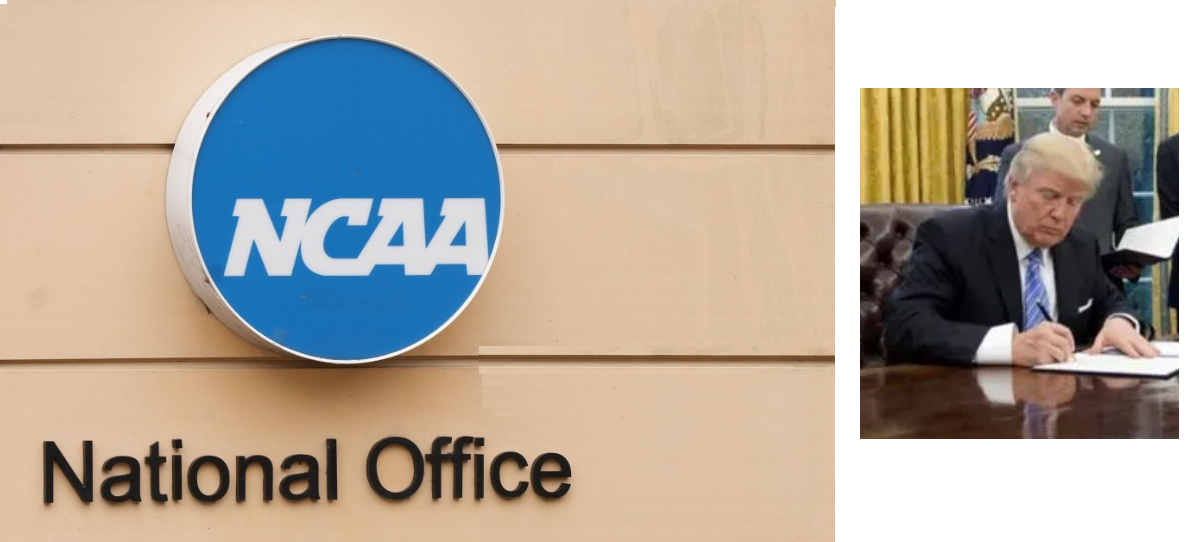President Trump Signs Executive Order on NCAA Reform, Stirring Debate Across College Sports

Washington, D.C. — July 24, 2025 Former President Donald Trump signed a sweeping executive order on Wednesday aimed at overhauling key aspects of NCAA governance, including athlete compensation, NIL (name, image, and likeness) regulations, and the classification of student-athletes. The order seeks to provide clearer federal direction as legal and political tensions continue to reshape college sports.
The executive order directs several federal agencies — including the Departments of Education and Labor, the Department of Justice, the Federal Trade Commission, and the National Labor Relations Board — to issue unified guidelines clarifying whether college athletes are considered employees. Trump’s administration strongly asserts they are not, directly challenging previous federal interpretations under the Biden era that had opened the door to unionization and employee benefits.
In addition to the employment question, the order attempts to rein in what Trump called the “chaotic NIL marketplace” by banning third-party booster-driven “pay-for-play” schemes. Athletes, however, may still profit from endorsement deals that reflect fair market value. The order frames this as a necessary balance between allowing athlete earnings and maintaining competitive equity among institutions.
To protect non-revenue and women’s sports, the order includes specific requirements for athletic departments based on revenue. Schools generating over $125 million in sports revenue must expand scholarship opportunities and maintain roster spots in Olympic and women’s sports. Those below the threshold must maintain existing levels of support. This move aims to counteract trends where athletic departments cut less profitable sports in response to NIL-era spending.
While the NCAA and some school leaders welcomed the order, reaction has been mixed. Critics argue the order falls short of Trump’s promises for sweeping reform. Advocacy groups point out that it offers no clear enforcement mechanism and leaves unresolved questions around Title IX compliance, especially relating to transgender athletes and scholarship distribution.
As agencies now have 30 days to propose guidance, the effectiveness of the executive order remains to be seen. For now, it represents a high-profile federal intervention in the evolving world of college athletics — but whether it results in real change or simply adds to the complexity is a question yet to be answered.
